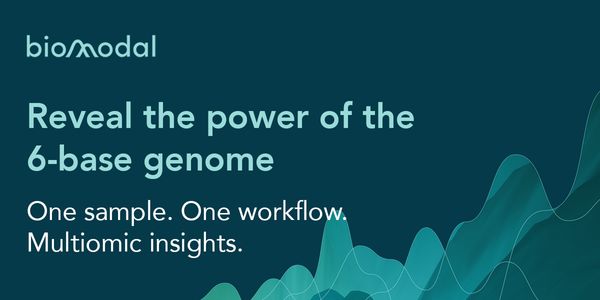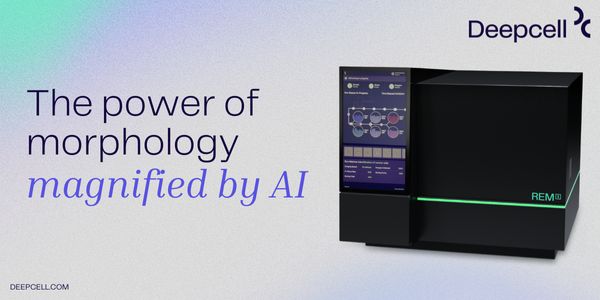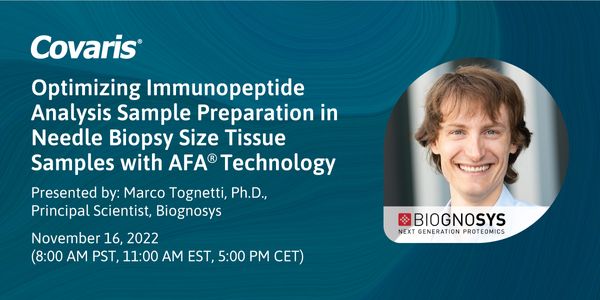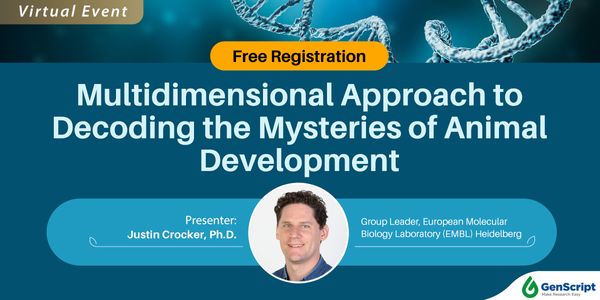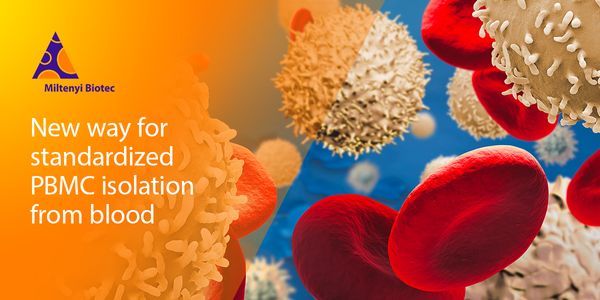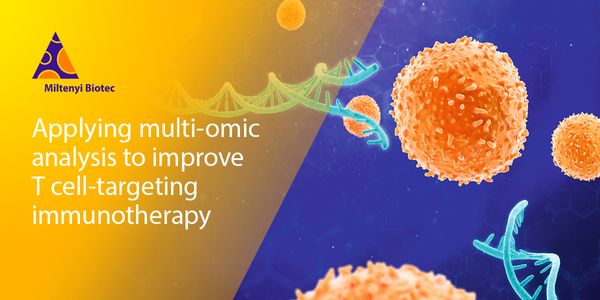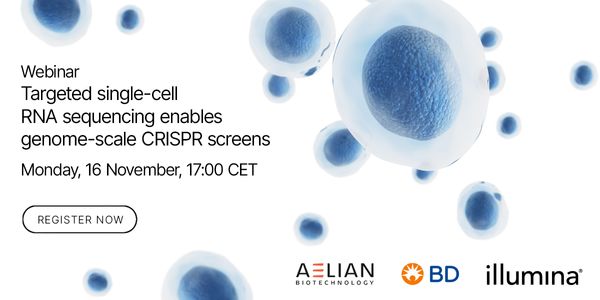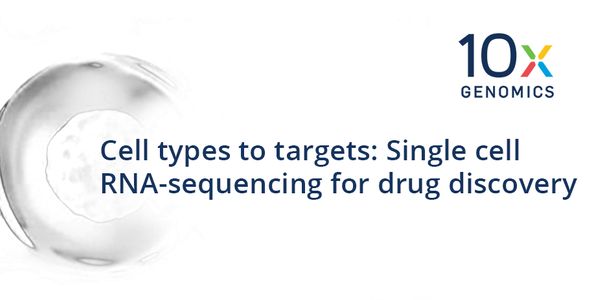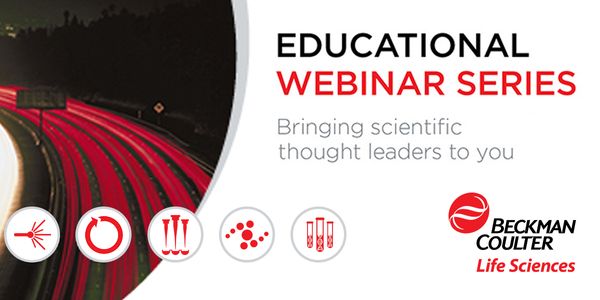Multiomics
Multiomics: is a new approach where the data sets of different omic groups are combined during analysis. The different omic strategies employed during multiomics are genome, proteome, transcriptome, epigenome, and microbiome.
-
MAR 27, 2024 | 9:00 AMJoin Dr. Emily Hodges, assistant professor of biochemistry at Vanderbilt University, to learn more about how the Hodges Lab is utilizing the 6-base genome to investigate the dynamics of enha...DEC 14, 2023 | 9:00 AMJoin our webinar where we will highlight key features of the NovaSeq™ X series including technology innovations, product updates, and features of the on-board DRAGEN™ secondary a...OCT 24, 2023 | 9:00 AMDNA comprises molecular information stored in genetic and epigenetic bases, both of which are vital to our understanding of biology in health and disease. The interaction of genetics with th...JUN 07, 2023 | 9:00 AMJoin us for an introduction to the Deepcell Platform, an instrument that combines advances in high-resolution imaging, deep learning foundation models to illuminate morphology in all its dim...FEB 15, 2023 | 7:00 AMDate: February 15, 2023 Time: 7:00am (PST), 10:00pm (EST), 4:00pm (CET) While not all microscopy samples can fluoresce, all can scatter light, and this scattered light can be imaged. This ha...Speaker: Philipp Kukura , Francesco Reina , Matthew Kose-Dunn , Phil AllenSponsored By: Teledyne PhotometricsNOV 16, 2022 | 8:00 AMDate: November 16, 2022 Time: 8:00am (PST), 11:00am (EST), 5:00pm (CET) Immunopeptides play an essential role in adaptive immunity by activating and ensuring T-cell specificity. Mass spectro...OCT 20, 2022 | 9:00 AMDate: October 13, 2022 Time: 11:00am (PDT), 12:00pm (EDT), 6:00pm (CEST) Single-cell atlases mapping immune cells provide hints on how immune cells mature, attenuate, and disseminate through...OCT 11, 2022 | 8:00 AMDate: October 11, 2022 Time: 8:00am (PDT), 11:00pm (EDT), 5:00pm (CEST) Multiomic profiling of cell populations at single-cell resolution is revolutionizing scientists’ understanding o...SEP 29, 2022 | 7:00 AMDate: September 29, 2022 Time: 7:00am (PDT), 10:00am (EDT), 4:00pm (CEST) Development and evolution are controlled, to a large degree, by regions of genomic DNA called enhancers that encode...MAY 31, 2022 | 9:00 AMDate: May 31, 2022 Time: 9:00am (PDT), 12:00pm (EDT), 6:00pm (CEST) Introducing Nanostring’s latest spatial platform, CosMx Spatial Molecular Imager (SMI). Offering high-plex, multiomi...SEP 28, 2021 | 9:00 AMDate: September 28, 2021 Time: 9:00am (PDT), 12:00pm (EDT) Standardization and reproducibility are prerequisites for peripheral blood mononuclear cell (PBMC) generation from donor or patient...APR 08, 2021 | 5:00 PMDATE: April 08, 2021 TIME: 08:00am PDT Multi-omics involves the use of different data modalities to study multiple “omes”, such as the genome, transcriptome, epigenome, and/or t...NOV 16, 2020 | 8:00 AMDate: November 16, 2020 Time: 8:00am (PST), 11:00am (EST) CRISPR screening has become the prime discovery tool in modern biomedical research and drug discovery. At the same time, most screen...OCT 29, 2020 | 8:00 AMDate: October 29, 2020 Time: 8:00am (PDT), 11:00am (EDT) What cell types cause and perpetuate disease? For many diseases, scientists only have guesses to this critical question. Single cell...JUL 09, 2020 | 9:00 AMDATE: July 9th, 2020 TIME: 9:00am PT Cell sorting is used to separate cells according to their cell size, shape and surface protein expression. Classically used after single cell studies to...Speaker: José Morachis , Brian Fritz, PhDSponsored By: NanoCellect Biomedical, Inc., 10x GenomicsA key step in the clinical production of CAR T cells is the expansion of engineered T cells. To generate enough cells for viable adoptive cell therapy, cells must be robustly stimulated, whi...Speaker: Pratip K. Chattopadhyay
MAY 12, 2020 | 8:00 AM
DATE: May 12, 2020 TIME: 8:00am PT Idiopathic aplastic anemia (AA) has two key characteristics: an autoimmune response against hematopoietic stem/progenitor cells and regulatory T cells (Tre...
Learning Objectives: 1. What is wrong with healthcare today 2. What kinds of omics and wearables data can be used to best predict disease risk and manage health...
APR 16, 2020 | 9:00 AM
DATE: April 16, 2020 TIME: 9:00am PT, 12:00pm ET There is an increasing need to evaluate and understand unique phenotypes and mechanisms of action within the tumor microenvironment. Existing...
Recent technological advances as well as longitudinal monitoring not only have the potential to improve the treatment of disease (Precision Medicine) but also empower people to stay healthy (...
I will present new insights into how multiomics profiling can be used to analyze and provide new insights into two complexes diseases, type 2 diabetes and autism....
MAR 27, 2024 | 9:00 AM
Join Dr. Emily Hodges, assistant professor of biochemistry at Vanderbilt University, to learn more about how the Hodges Lab is utilizing the 6-base genome to investigate the dynamics of enha...
DEC 14, 2023 | 9:00 AM
Join our webinar where we will highlight key features of the NovaSeq™ X series including technology innovations, product updates, and features of the on-board DRAGEN™ secondary a...
OCT 24, 2023 | 9:00 AM
DNA comprises molecular information stored in genetic and epigenetic bases, both of which are vital to our understanding of biology in health and disease. The interaction of genetics with th...
JUN 07, 2023 | 9:00 AM
Join us for an introduction to the Deepcell Platform, an instrument that combines advances in high-resolution imaging, deep learning foundation models to illuminate morphology in all its dim...
FEB 15, 2023 | 7:00 AM
Date: February 15, 2023 Time: 7:00am (PST), 10:00pm (EST), 4:00pm (CET) While not all microscopy samples can fluoresce, all can scatter light, and this scattered light can be imaged. This ha...
Speaker:
Philipp Kukura
, Francesco Reina
, Matthew Kose-Dunn
, Phil Allen
Sponsored By: Teledyne Photometrics
NOV 16, 2022 | 8:00 AM
Date: November 16, 2022 Time: 8:00am (PST), 11:00am (EST), 5:00pm (CET) Immunopeptides play an essential role in adaptive immunity by activating and ensuring T-cell specificity. Mass spectro...
OCT 20, 2022 | 9:00 AM
Date: October 13, 2022 Time: 11:00am (PDT), 12:00pm (EDT), 6:00pm (CEST) Single-cell atlases mapping immune cells provide hints on how immune cells mature, attenuate, and disseminate through...
OCT 11, 2022 | 8:00 AM
Date: October 11, 2022 Time: 8:00am (PDT), 11:00pm (EDT), 5:00pm (CEST) Multiomic profiling of cell populations at single-cell resolution is revolutionizing scientists’ understanding o...
SEP 29, 2022 | 7:00 AM
Date: September 29, 2022 Time: 7:00am (PDT), 10:00am (EDT), 4:00pm (CEST) Development and evolution are controlled, to a large degree, by regions of genomic DNA called enhancers that encode...
MAY 31, 2022 | 9:00 AM
Date: May 31, 2022 Time: 9:00am (PDT), 12:00pm (EDT), 6:00pm (CEST) Introducing Nanostring’s latest spatial platform, CosMx Spatial Molecular Imager (SMI). Offering high-plex, multiomi...
SEP 28, 2021 | 9:00 AM
Date: September 28, 2021 Time: 9:00am (PDT), 12:00pm (EDT) Standardization and reproducibility are prerequisites for peripheral blood mononuclear cell (PBMC) generation from donor or patient...
APR 08, 2021 | 5:00 PM
DATE: April 08, 2021 TIME: 08:00am PDT Multi-omics involves the use of different data modalities to study multiple “omes”, such as the genome, transcriptome, epigenome, and/or t...
NOV 16, 2020 | 8:00 AM
Date: November 16, 2020 Time: 8:00am (PST), 11:00am (EST) CRISPR screening has become the prime discovery tool in modern biomedical research and drug discovery. At the same time, most screen...
OCT 29, 2020 | 8:00 AM
Date: October 29, 2020 Time: 8:00am (PDT), 11:00am (EDT) What cell types cause and perpetuate disease? For many diseases, scientists only have guesses to this critical question. Single cell...
JUL 09, 2020 | 9:00 AM
DATE: July 9th, 2020 TIME: 9:00am PT Cell sorting is used to separate cells according to their cell size, shape and surface protein expression. Classically used after single cell studies to...
Speaker:
José Morachis
, Brian Fritz, PhD
Sponsored By: NanoCellect Biomedical, Inc.,
10x Genomics
A key step in the clinical production of CAR T cells is the expansion of engineered T cells. To generate enough cells for viable adoptive cell therapy, cells must be robustly stimulated, whi...
Speaker:
Pratip K. Chattopadhyay
MAY 12, 2020 | 8:00 AM
DATE: May 12, 2020 TIME: 8:00am PT Idiopathic aplastic anemia (AA) has two key characteristics: an autoimmune response against hematopoietic stem/progenitor cells and regulatory T cells (Tre...
Learning Objectives: 1. What is wrong with healthcare today 2. What kinds of omics and wearables data can be used to best predict disease risk and manage health...
APR 16, 2020 | 9:00 AM
DATE: April 16, 2020 TIME: 9:00am PT, 12:00pm ET There is an increasing need to evaluate and understand unique phenotypes and mechanisms of action within the tumor microenvironment. Existing...
Recent technological advances as well as longitudinal monitoring not only have the potential to improve the treatment of disease (Precision Medicine) but also empower people to stay healthy (...
I will present new insights into how multiomics profiling can be used to analyze and provide new insights into two complexes diseases, type 2 diabetes and autism....

